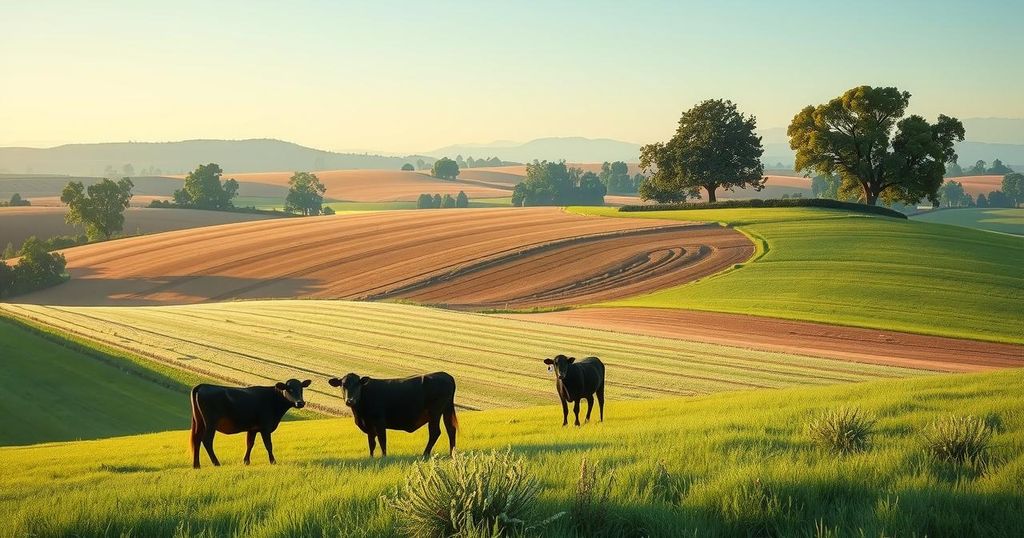Artificial Intelligence Revolutionizing Livestock Farming with Exponential Growth Forecast
The Artificial Intelligence in Livestock Farming market is projected to grow with a CAGR of 26.2% from 2022 to 2030, driven by advanced technologies in livestock management. Key applications include monitoring health, enhancing feed quality, and disease management. North America leads the market, followed by significant growth opportunities in Asia Pacific. Major players and strategic collaborations are pivotal in driving this evolution.
The global Artificial Intelligence in Livestock Farming market is on a rapid growth trajectory, anticipated to reach a CAGR of 26.2% from 2022 to 2030. AI is transforming traditional farming practices with advanced algorithms and IoT-enabled sensors, allowing farmers to monitor livestock health and make data-driven decisions. This technological wave enhances operations in the dairy and cattle sectors, boosting productivity and profitability.
Farmers are leveraging AI for better disease management and feed quality. Core AI applications include monitoring livestock health, optimizing supply chains, and implementing computer vision algorithms for behavior tracking. The increasing need for data-centric management and government support accelerates market growth, alongside rising concerns for livestock welfare.
North America is projected to lead the AI in livestock farming market, driven by a surge in automated cattle management solutions and a demand for high-quality dairy products. Strategic alliances among industry players like Raven Industries and IBM are spurring innovation and improving practices, while local firms strive to enhance their market presence.
In the Asia Pacific region, the AI livestock farming market is set to expand significantly, stimulated by growing food consumption and disease prevalence. Adoption of IoT and computer vision technologies is vital in this growth, with major firms integrating AI solutions for more efficient practices.
Key players in this burgeoning market include BovControl, BinSentry Inc, and Cainthus, among others. Noteworthy partnerships, such as Cainthus’s Alus Behavior system and Merck’s acquisition of Quantified Ag, highlight the industry’s focus on innovation and animal welfare.
Market segments feature a comprehensive categorization by technology, application, type, and farm size. The components range from IoT sensors to software solutions, ensuring a diverse approach to livestock management. This strategic evolution is crucial as farmers adapt to new technologies to meet demands and challenges in their operations.
As the global landscape changes, the integration of AI in agriculture proves pivotal in maximizing yields and ensuring the health of livestock. The continued evolution of technology promises to reshape traditional farming, making it more efficient, sustainable, and responsive to the pressing needs of today’s market.
This article delves into the transformative potential of Artificial Intelligence in livestock farming, highlighting its rapid growth and the significant technological advancements driving the industry. With North America leading the charge and Asia Pacific poised for notable developments, AI applications are enhancing livestock management and productivity while addressing modern agricultural challenges. As farmers embrace these innovations, the future of livestock farming appears more efficient and resilient against ongoing market demands.
Original Source: www.openpr.com




Post Comment